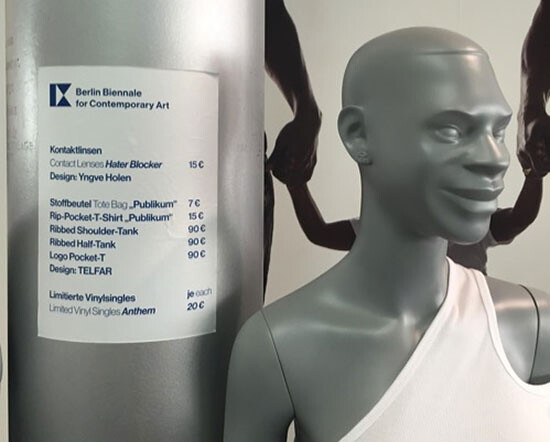1. Anticipointment1
During the press preview of this summer’s 9th Berlin Biennale, in the main room of Kunst-Werke, I saw a distracted visitor who didn’t notice a pool of water surrounding a video installation.2 He ended up falling into it. This unintentional encounter apparently happened to many visitors, and it became a symbolically tragicomic way to begin my visit to the biennial: like a joke that is not funny, nor ironic. What is it then?
This time around, we are not talking about how an old generation controls the decision-making, or about what a young generation finds slick and appealing, or how it tells the old generation what’s new and cool. What is happening is not a generational issue in which an accelerated present takes precedence over an obsolete past and announces the abolition of the future it envisioned.
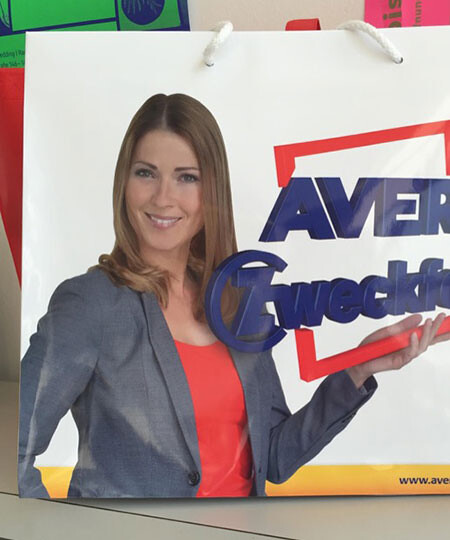

2. Énouement3
On November 26, 2016, the fortieth anniversary of the release of the Sex Pistols’ “Anarchy in the UK,” Joe Corré, the son of Malcolm McLaren and Vivienne Westwood, plans to burn his collection of irreplaceable original punk memorabilia, valued at around £5 million. In a press release, Corré—who turned down membership in the Most Excellent Order of the British Empire—said:
People are feeling numb. And with numbness comes complacency … The most dangerous thing is that they have stopped fighting for what they believe in. They have given up the chase. We need to explode all the shit once more … These days, everyone’s worried about their brand. We live in an age of conformity. Burning this gear is about saying we don’t subscribe to those values.4
Corré deliberately chose a controversial act of vandalism against the beloved heritage of “punk.” Is it also a defensive maneuver? When necessary, we might have no choice but to kill our heroes, or fire ourselves. Maybe one day we will have no choice but to end biennials as well, in order to prevent their total capture by commerce and the corporate aesthetics of self-branding, digital nihilism, individualism, superhighway populism, cyber-utopianism as marketing gimmick, absolute alienation, transhumanism, loops of consumption, hyperconfiguration, privatization, product placement, hyperlinking, artificiality, selfish youthfulness, fetishized novelty, and the institutionalization of neoliberal and colonial agendas that cannot distinguish sponsorship from ownership.
3. Opia5
Since 2010, DIS has established significant autonomy as an independent collective across a range of media and platforms, bringing together what it describes as an international community of writers, fashion designers, photographers, musicians, and DJs. But the combination of the 9th Berlin Biennale and DIS has created a dangerous condition. The danger is to be found in the promotion of a “sarcastic” attitude as a tool for institutionalization, and as a means of legitimizing complicity. Art doesn’t always have to be about legitimizing humanitarian, ethical, and analytical positions, negotiating for structural change, or reclaiming the city. There is nothing wrong with having fun. But what is happening with the combination of the 9th Berlin Biennale and DIS is not “fun.” It’s also not simply about what has been referred to as a new aesthetics, a new generation, or just “the new” in general. It is rather about a glorified sarcastic nihilism that dominates any form of sincerity, humor, irony, emotion, intellectual discourse, critique, or political and social struggle over how modes of art production can be detonators for counterculture and counterfinance.
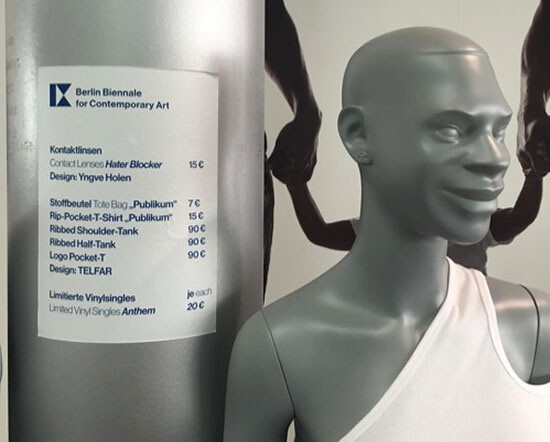

4. Occhiolism6
In 2011, I travelled to Moscow for the first time to participate in the Fourth Moscow Biennale, which had a strong focus on new media and technology (I never know what this means, but some critics called it “gadget art”). One of the main venues was the top floor of the Central Universal Department Store, perhaps Moscow’s most fashionable and expensive department store. As we walked up every single floor to reach the exhibition space, we were asked to test perfumes along the way. At the other exhibition sites for the biennial, the first things I encountered were a car being promoted by a sponsoring company, and a kiosk displaying new Samsung flat-screen TVs. Sponsors were present not only through logos but also through competing installations.
Many celebrities walked around with personal photographers looking for an artwork to use as a background. It seemed I had landed in a really bad dream: a future of biennials that no longer distinguished art and its contingent spaces from the corporate visualizations and branding that accompanied them. This future is close, even overlapping with our present. Five years later, with this dystopian future scenario still in my mind, I was not surprised to encounter the 9th Berlin Biennale’s branding, which depicted a so-called post-contemporary cul-de-sac of complicit conditions.
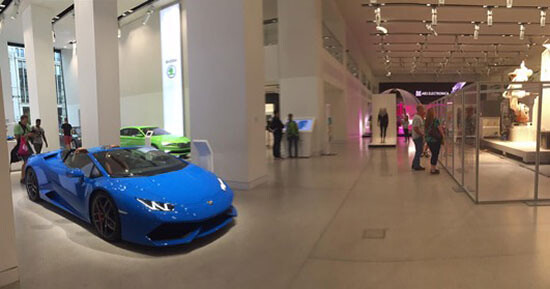

5. Slipcast7
A few weeks after the Berlin Biennale opened in June, I went to see the exhibition “Human Factor – Endless Prototyping,” organized by Ars Electronica and held at the Volkswagen Group Forum in Berlin. It featured artworks dealing with the challenges of the “digital revolution,” and focused on the human element in an engineered environment. There were projects about bricks made of sand hardened with the help of bacteria, and a prospective future scenario that envisioned a supermarket in which customers could pay only with their personal Facebook data. Innovative projects merging art and science were spread around the venue alongside Lamborghinis and other shining cars—here the distinction between art and commerce was nonexistent.
At its temporary venue on Leipziger Strasse, the Julia Stoschek Collection celebrated the successful institutionalization of so-called post-internet art, which had previously been a low-cost art practice that circulated primarily online. Now it consists of high-budget installations, and is well represented in the art market. In response to this increased market demand, will artists be complicit in corporatized exhibitions, or will they use information technology for countercultural purposes? Berlin is an appropriate place to ask these questions, as it is where the Chaos Computer Club was founded on September 12, 1981. Europe’s largest association of hackers, the CCC advocates for government transparency, freedom of information, universal free access to computers and technological infrastructure, and the human right to communication.
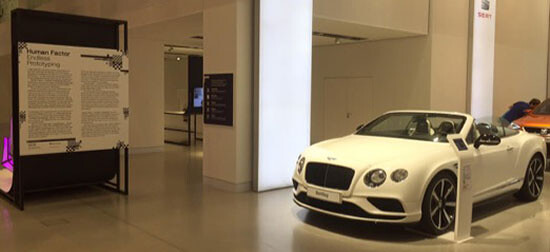

6. Apomakrysmenophobia8
Even if there has been a strong aesthetic break in recent years, modes of art production and their possibilities should not be altered to fit the SWOT matrix used in the business world to evaluate companies, products, industries, and people: “strengths, weaknesses, opportunities, and threats.” While our gut reaction might be to say, “A biennial cannot be reduced to a playground for representing successful and desired art genres,” we need to look at what is underneath these slick and appealing desires. The problem is not the genres, but the attitude with a capital A, especially when it comes to decision-making: we must be wary of an attitude that promotes self-centered surplus, competition, and individual success, as is found everywhere in Western capitalism in the neoliberal age. The solution is not to ignore or run away from this million-dollar question. Mimicry is not an answer either.
7. Kuebiko9
In order to develop counterfinance strategies, we need to understand that the financial world and its tricks are not based on the “real” economy, on the actual production of goods and services in a traditional sense. They are based on speculation, on the buying and selling of shares and debts.
The word “debt” appeared in the press statement of the 9th Berlin Biennale only once, and since then it hasn’t been around. Although one thing must be acknowledged; early last year DIS’s online platform organized an eloquent debate concerning the issue, as did the biennial catalogue and the texts commissioned especially for the biennial and published online under the heading “Fear of Content.” During the press conference held at the Allianz Forum, not a single question was asked. “Fear of Content” could have initiated a stimulating discussion, but in the actual exhibition spaces sarcastic nihilism mostly covered up issues that are still taboo.
Today’s economy makes it increasingly difficult to pursue higher education and earn a living as an artist, especially in New York, where DIS is based. DIS was formed two years after the 2008 global financial crisis, which eliminated many commercial creative jobs. Given the precarity of artmaking in the US, it is safe to assume that most of the American artists participating in 9th Berlin Biennale, especially if they were born in the 1980s or later, are buried in student loan debt. We can’t ignore such a life-alerting fact; as Maurizio Lazzarato has written, the “indebted man” is a central subjective product of the neoliberal age. This age, according to Lazzarato, began in the mid-1970s with changes to the financing structure of the welfare state.
Berlin has been thought of as comfort zone where people can escape unpleasant debates around economic issues, income inequality, rates of artist compensation, wage stagnation, and rising tuition costs. It is perhaps the suppression of these concerns that generates the slick image of young, glamorous, skinny, beautiful bodies in front of white backgrounds. All those who lost their jobs during the 2008 financial crisis and had to become “creative technologists” and “innovative designers” have returned to the art world, but only a few will find commercial success amidst the new institutionalized genre-fication.10 The rest, as life dictates, will be forced to continue working multiple jobs such as art handling, bartending, and other low-paid gigs.
8. Zielschmerz11
What has been the position of the Berlin Biennale when it comes to urgent questions about the city itself? What has it advocated for? In the history of the Berlin Biennale, the 7th edition—curated by Artur Żmijewski and held in 2012—bent the rules the most. But it ultimately failed because of a few tactical mistakes, such as failing to review over five thousand project proposal submitted through ArtWiki, and inviting the Occupy movement to occupy only the main exhibition space of KW. An institution is made up not only of exhibition space. The occupation should’ve been extended to the office space, where the decisions were made. Still, we can view this as a productive failure that enables a step forward rather than back.
I have a feeling that since Żmijewski’s edition, the dominant factor in decision-making around the Berlin Biennale has been a “fear of failure.” At this very particular “present” in history, it would be ridiculous if the trajectory of the debate were stuck on the question of either politics or aesthetics. It is definitely time to step out of our comfort zones.
9. Rubatosis12
Meanwhile, there is a lot happening in Berlin related to long-standing debates about city politics. The fear-driven hostility expressed by traditional, outdated models of cultural hegemony13 is a product of current polarization campaigns around Europe. Corporate city branding strategies that promise a generic cosmopolitan experience (“be Berlin,” “I amsterdam,” “OPEN Copenhagen”) should not be confused with the necessity for progressive and engaged culture institutions. In Berlin, the Humboldt Forum, which will open in 2019, is one scandalous example. The Humboldt Forum’s plan is to relocate the ethnological collections of the Museum Dahlem (which was one of the venues for the 8th Berlin Biennale) to a reconstructed Prussian palace in the center of Berlin—a multicultural West German-East German gesture on the part of German neofeudalism, in the colonial competition among networked global museums.
This is something that cannot be subverted with either a top-down or a bottom-up approach. Rather, it necessitates a hybrid strategy. This year in Berlin, several new laws have been passed that cap rents for the quarter of a million people who live in the city’s public housing. This will hopefully head off unsustainable rent hikes before Berlin turns into another Williamsburg or East London. In January 2011, under the name “Haben und Brauchen” (To Have and to Need) a group of artists, curators, scientists, art historians, critics, exhibition-makers, gallery-owners, politicians, architects, and planners published an open letter that aimed to make Berlin’s complex of cultural and political problems accessible to the general public.14 Two years later, in April 2013, Haben und Brauchen published another letter about the planned Berlin City Tax.15 As the layered, long-term issues of the city are deliberately absent from the 9th edition of the Berlin Biennale, it is interesting to note the absence of any statement by Berlin’s artists and culture workers expressing discomfort with genre-fication.16
10. Lachesism17
I would propose that in times of heavily militarized technology, we should learn how to be time-sensitive when talking about “present, past, future.” If, when talking about the “present,” we mean the timespan between the initial conception of the 9th Berlin Biennale and its subsequent opening, none of us knew that on June 3 more than 340 people would be rescued from a boat thought to have been carrying seven hundred migrants to Italy, calling to mind the 2011 case of the migrant boat “left to die” by the NATO-led coalition fighting in Libya;18 or that on July 3, shortly after a coordinated bomb attack in Baghdad killed over three hundred and injured hundreds more, Iraq’s prime minister would order the removal of British-made fake bomb detectors and renew a corruption investigation into the sale of the devices from 2007–10, which cost Iraq more than £53 million; or that in the early hours of July 8 in Dallas, for the very first time US law enforcement officers used a robot (the Remotec Andros Mark V-A1) to kill a suspect, who was an Afghan War veteran; or that on July 15 members of the Turkish military would attempt a coup d’état, flying F-16s over Istanbul low enough to create sonic booms that sounded like explosions. These are only some of the catastrophic incidents that have been happening, and unfortunately there are more to come. And no matter where we are, they impact us. Therefore one should not see catastrophe and human tragedy as time-related or distance-related; they are motion-related and often technology-monitored.
Regarding the statement of the 9th Berlin Biennale, the discussion should not be narrowed down to the ABCs of post-post-internet art (aesthetic) or post-contemporary art (genre-fication). What if the catastrophe is not somewhere far away, but just around the corner? Does Jon Rafman’s virtual reality simulation View of Pariser Platz (2016) make us feel safe, as if the Berlin Biennale itself is far away from such a doomsday scenario? Even staying within the safe zone of the art world, why do we keep hearing about new campaigns to save art institutions that are on the brink of disappearing (“Save Malmö Art Academy,” “Save De Appel,” or recently closed institutions like the Townhouse Gallery, YAMA, and SALT Beyoğlu)? Can we even be sure that the Berlin Biennale as we know it will exist much longer?
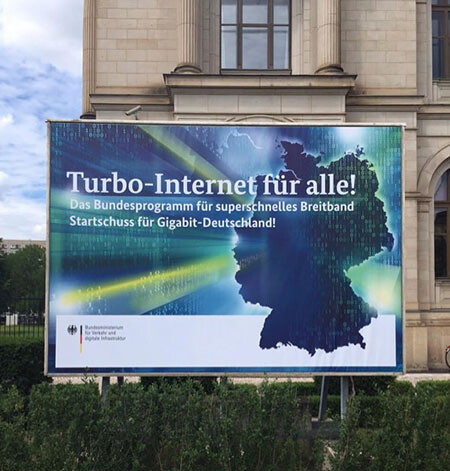

11. Flashover19
As many have already asked, does the 9th Berlin Biennale present a better art world, or does it give up on art entirely? Artists like Trevor Paglen (who has collaborated with journalist, artist, hacker, and security researcher Jacob Appelbaum) and Hito Steyerl (who, instead of using existing footage, travelled to shoot at the actual site of the former National Observatory of Iraq, now within the territory of the Kurdistan Regional Government) are well aware of the urgent question of how to navigate information technologies that are under the pressure of state-monopolized and militarized conditions. This should not be confused with other positions that are limited to mimicry. Babak Radboy, the creative director of the influential Bidoun magazine, was one of the people responsible for the biennial’s highly problematic marketing slogan “Why should fascists have all the fun?”20 He deliberately avoided responsibility for this question, claiming as a tactic that he was technically “not in the biennial” and “not the creative director,” even though his ad campaign was at the heart of the biennial. The best response to this evasive attitude can be found in the self-critique of Mike Meiré of Meiré and Meiré, who was behind the visual identity of the 9th Berlin Biennale. In a 2002 interview he discussed the early years of branding:
By the mid-Eighties we at One Blow had sixty people. We were very successful. Many magazines covered us. We were showpiece yuppies. Naturally that was a great time, but in a certain way it also perverted me. You live in your own world, which consists of a sort of conditioned sounding board. By that I mean that for everything you do, you get feedback only from your own clique. You somehow only function within this scheme. You have to make sure that you can break out again.21
Perhaps it is impossible to expect a biennial to directly address the urgent issues that surround us today. Yet DIS could still have taken a focused stand, maybe by embracing queer theory as an anarchic and transformative concept, as was indirectly promised by the biennial’s title, as Tess Edmonson points out in her review of the Biennial, ”The Present in Drag.”22 They could have attempted to problematize or “disengage from networks of capital and power”23—or they could have simply made art fun again by bending the rules. Instead, DIS remained in its own echo chamber and stayed complicit with neoliberalism. 24
The section titles in this text are all from the Dictionary of Obscure Sorrows. Created by John Koenig, this dictionary consists of neologisms (and their corresponding definitions) that designate emotions hitherto unnamed in English →. Anticipointment refers to the sinking feeling when anticipation fails to be the greater part of pleasure.
This pool was part of Cécile B. Evans’s immersive installation that consisted of her works What the Heart Wants (2016), Endurance Study – A Pictorial Guide I, II, III (2016), and Handy if you’re learning to fly I, II (2016).
The word can be defined as the bittersweetness of having arrived in the future, seeing how things turn out, but not being able to tell your past self.
Quoted in Tim Jonze, “Malcolm McLaren’s son to burn £5m of punk memorabilia,” Guardian, March 16, 2016 →.
The word can be defined as the ambiguous intensity of looking someone in the eye, which can feel simultaneously invasive and vulnerable.
The word can be defined as the awareness of the smallness of your perspective.
The word can be defined as the default expression that your face automatically reverts to when idle; amused, melancholic, pissed off.
The word can be defined as the fear that your connections with people are ultimately shallow.
The word can be defined as the state of exhaustion inspired by acts of senseless violence, which force you to revise your image of what can happen in this world.
As a BFAMFAPhD report shows, there are about two million arts graduates in US, with bachelor’s degrees in fields such as music, drama, theater arts, film, photography, art history and criticism, studio art, visual art, and performing arts. Fewer than 200,000 – just 10 percent – make their living primarily as artists. The rest are dispersed across other occupations: 23 percent work in professional and managerial occupations, 17 percent are employed as sales and office workers, and 17 percent work as educators. Another 14 percent are not in the labor force at all. See →.
This word can be defined as the exhilarating dread of finally pursuing a lifelong dream.
This word can be defined as the unsettling awareness of your own heartbeat.
Chris Dercon’s contested appointment as director of the Volksbühne Theater started a new discussion about rethinking the role of theater in Berlin and in Germany as a whole. However, the Maxim Gorki Theater and the Impulse Theater Festival have been taking up this challenge for years, sometimes in an even more progressive way than most contemporary art institutions.
Haben und Brauchen: “In contrast to other big cities, Berlin was devoid of any exceptional pressure on the housing market, and the range of available spaces enabled diverse and often self-organized art practices. Now this situation is beginning to change dramatically. Rents are on the rise, and pressure on the conditions of production and living is increasing without any increase in money making opportunities. Most people engaged in cultural production still earn most of their money outside of Berlin. The bustling art scene in Berlin evolved less through the specific support of the city and more through its historical situation. Nevertheless, at the very moment when the conditions for people engaged in cultural production are worsening dramatically, the city prides itself on its artists; and the attention is welcome—in principle. Formed in response to these issues, Haben und Brauchen seek to be advocates in the field of art as well as in art’s neighboring occupational fields with a platform for discussion and action.” See →.
Haben und Brauchen: “We demand the implementation of the statement made in the coalition agreement between the governing parties that they wish to increase support for independent cultural production and to improve its structural framework in concrete, active political action: independent of if and when the City Tax does eventually become reality. We demand a new, qualified and sustainable cultural policy which recognises the reality and social relevance of a self-organised artistic practice which has grown out of the specific historical conditions and free spaces to be found in Berlin.” See →.
Discomfort with the genre-fication of politically engaged artistic practices was addressed in a public letter collectively written by a loose group of Berlin-based artists and cultural workers during the three-day congress of Artist Organizations International at HAU Hebbel am Ufer in Berlin, January 2015.
This word can be defined as the desire to be struck by disaster.
In the summer of 2011, the “research agency” Forensic Architecture launched the Forensic Oceanography project. Its aim was to support a coalition of NGOs demanding accountability for the deaths of migrants in a region of the central Mediterranean Sea that, starting in March of that year, was being tightly monitored by NATO as part of its arms embargo against Libya. During the events of the “left-to-die boat” case, this monitoring enabled NATO and participating states to become aware of any migrant distress signals—and therefore be effective in assisting. The Forensic Oceanography report turned the knowledge generated through surveillance into evidence of responsibility for the crime of nonassistance.
This word can be defined as the moment a conversation becomes real and alive.
This slogan was part of a marketing campaign called “Not in the Berlin Biennale,” created for the biennial by Radboy, Roe Ethridge, and Chris Kraus.
Mike Meiré in an interview with Peter Martin, Branding Interface, June 2002.
See Tess Edmonson, “The Present in Drag,” 9th Berlin Biennale, Art-Agenda (June 4, 2016) →.
Tess Edmonson, “The Present in Drag,” 9th Berlin Biennale →.
Category
Subject
The author would like to thank Brian Kuan Wood, Anton Vidokle, and Noah Barker, for their challenging conversations and generous input. A special thanks to Kinga Kielczynska, Bonaventure Soh Bejeng Ndikung, Puck Verkade, and Emily Roysdon. All photos courtesy of the author.
